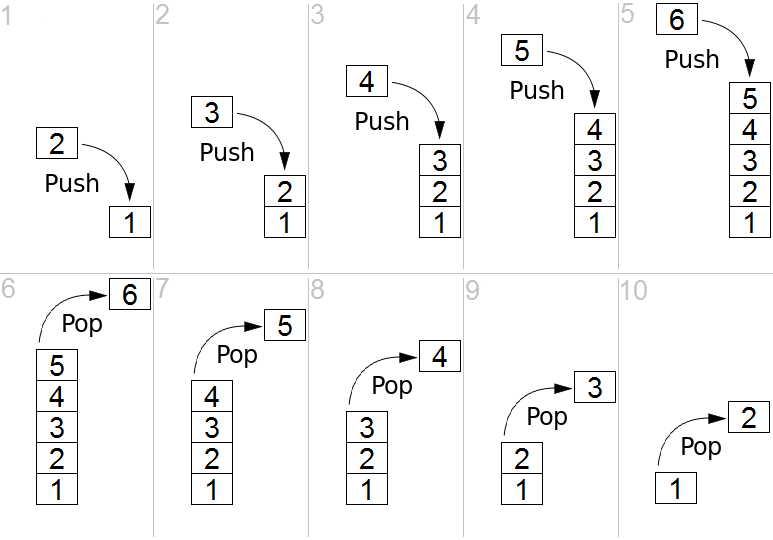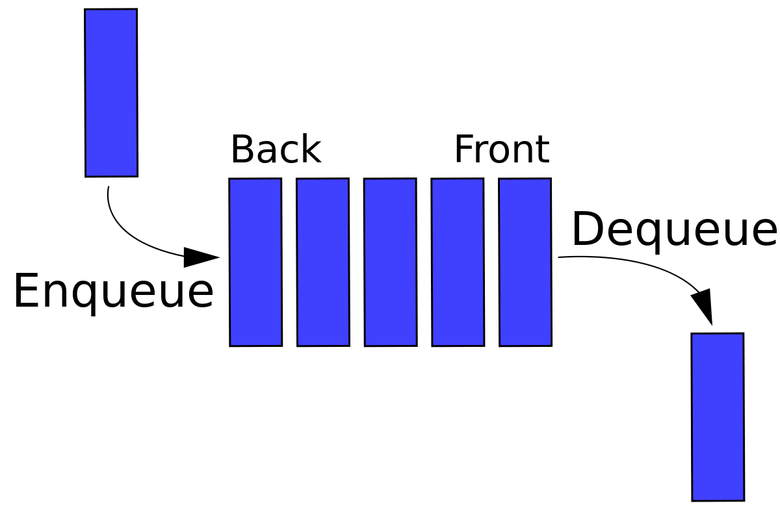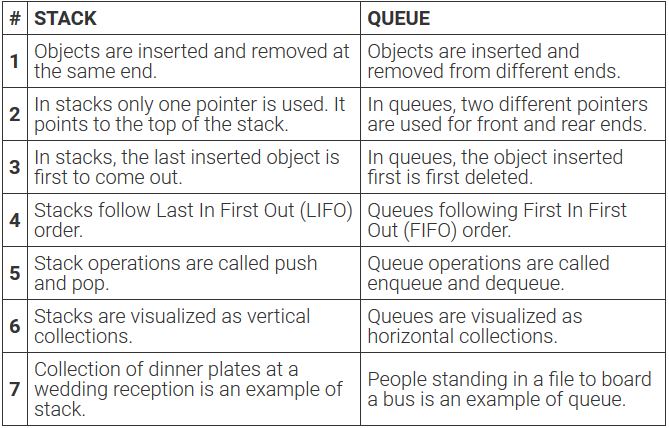Asking for the difference between stack and queue is a pervasive question under programming language courses. Most of you either get stuck or puzzle it up. Both stack and queue fall under the non-primitive data structures. To understand both stack and queue and their difference, first, you need to know what a data structure is.
What is Data Structure
Data structures are accumulated and presented in computer systems and utilized by computer programs. The goal of data structures is to arrange the data to be used efficiently.
These data structures form the stacks and queues—both store elements in a computer. So, let’s look at the difference between stack and queue in a computer programming language.
Definition of Stack and Queue
A non-primitive linear structure is known as a “stack.” Here, in an ordered list, a new element is added while the existing element is deleted from a singular end known by the name of TOS or the top of the stack. Since all the deleting and inserting processes in the stack are performed from the top of the stack, the element that you will add right at the end will be the primary one to be removed. Because of this, the stack is also known as the Last-In-First-out (LIFO) in the list.

Remember that the element that is accessed often is stacked right at the top, while the last available element is at the bottom. Take the example of biscuits. When you take it for granted that only one side of the biscuit packaging is torn, and the biscuits are taken out from the packet one by one, this system can be called “pop.” On the other hand, if you keep some biscuits for later usage and pack it back in the same torn packet, this will be known as pushing.
On the other hand, a queue is also a linear data structure that belongs to non-primitive categories. The collection of elements here is all similar. The new elements are added to the rear end. At the same time, the deleting of the existing elements takes place at the front end. The list type attached to the Queue is First in, First Out, or FIFO. The example of “Queue” can be taken from our daily life experience. We keep waiting for a service for our turn to come.
Do you know the Real-time applications of Queue in Data Structure? Indeed, we will discuss this in our future articles.

Stack implementation
you can apply the stack in two ways:
1. Static implementation
Here, arrays are used to create a stack. Although it is an effortless method, it is not a very flexible creation process. For memory utilization, too, this is not such a sound technique.
2. Dynamic implementation
Also known as the linked list representation, it uses pointers for implementing the type of stack data structure.
Queue implementation
For queue implementation, too, the divisions are two:
1. Static implementation
If you want to implement the queue using arrays, ensure that you assure the exact number of elements beforehand. The array has to be mentioned at the time of design.
2. Dynamic implementation
In this case, the implementation of queues is done with the help of pointers. However, there is a disadvantage in this case. The linked representation has a node that consumes a lot of space in the memory.
Applications of Stack
- Parsing in a compiler
- Java virtual machine
- Undo in a word processor
- Web browser’s back button
- Post-script language to be used for printers
- The compiler is needed to perform implementation functions
Applications of Queue
- Data Buffers
- Asynchronous transfer of data
- Allotting requests on shared resources
- Analysis of traffic
- Determining the number of cashiers that are present in the supermarket
Difference between Stack and Queue

Conclusion
So, although queue and stack are both linear data structures, they differ in their ways. However, both serve to store elements as per the list and perform relevant operations as mentioned in the list.